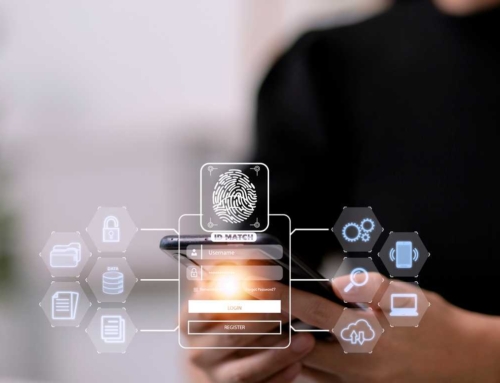Best Practices for Communicating with Stakeholders During a Ransomware Attack
The Importance of Effective Communication in Crisis Management
Communicating during a ransomware attack is not merely about conveying information but about effectively managing the crisis. In times of such technological adversity, the ability of our team at Alvaka to maintain control and demonstrate leadership through communication can spell the difference between a managed response and operational chaos. It is our responsibility to ensure all stakeholders are promptly informed with the right level of detail, thereby preventing misinformation and panic. Effective communication safeguards our clients’ confidence in our ability to handle the situation and reinforces the perception of Alvaka as a reliable defender against cyber threats.
Understanding the Stakeholders: Who Needs to Know What and When
Each stakeholder requires tailored communication tailored to their interests and needs. As a trusted IT management and network services provider, we at Alvaka recognize that our clients rely on us to keep their operations running smoothly. We make it our priority to keep them apprised of any developments during a crisis, ensuring they understand the impact on their business. At the same time, we communicate with our internal teams to coordinate a swift and effective response, and with law enforcement and regulatory bodies as necessary, to align our crisis management efforts with legal requirements and best practices.
Setting the Tone: Balancing Transparency with Discretion
In our communications, we strive to find a balance between transparency and discretion. It is critical to be clear and straightforward about the nature of the attack without compromising sensitive data or providing an attacker with information that could be used to their advantage. We aim to build trust through openness where appropriate, while safeguarding our clients’ confidentiality and maintaining the security integrity of our own networks. Our experienced specialists ensure that our communications are strategically crafted, delivering the right message, to the right people, at the right time.
Immediate Actions: Communicating during Ransomware Attack
In the chaotic initial moments of a ransomware attack, swift and strategic communication is imperative. Understanding the gravity of the situation, we prioritize establishing a command center to coordinate our response efforts. It’s essential to communicate clearly with our IT team to assess the extent of the incident and contain the breach. Simultaneously, our communication with stakeholders is initiated, providing them with the critical facts and steps being taken to mitigate the threat. During this phase, the first priority is to ensure the safety of our network and the integrity of our data.
Crafting the Message: Clarity, Honesty, and Reassurance
When crafting our communication, we focus on three key elements—clarity, honesty, and reassurance. Initially, stakeholders need to know the scope of the attack, how it may affect them, and what measures are in place to protect their interests. Transparency is critical; therefore, we provide factual information without causing unnecessary panic. By maintaining an open line of communication, we aim to assure stakeholders that we are in control of the situation and are employing all necessary resources to resolve the issue.
Communicating during Ransomware Attack: Ongoing Updates and Managing Expectations
As we navigate the complexities of the ransomware attack, we commit to providing ongoing updates to keep stakeholders informed about our progress. These updates are carefully scheduled to give accurate snapshots of our recovery efforts while managing expectations realistically. Throughout this process, we aim to reinforce trust with our stakeholders through our dedication to transparency and our expertise in IT management and network services.
Ongoing Updates and Managing Expectations
With every update we share, our objective is twofold: to be forthright about the challenges we are facing and to reaffirm our commitment to restoring operations as swiftly and securely as possible. We understand that consistent communication is as crucial as technical resolutions. Thus, we establish a regular cadence for our updates and ensure that they are easy to understand, cutting through the complexity that often accompanies IT jargon. Furthermore, we welcome inquiries and feedback, ensuring our stakeholders that they are heard and valued throughout the recovery process.
- Establish an immediate response team to streamline communications.
- Communicate critical information promptly and effectively.
- Provide regular, transparent updates to manage stakeholder expectations.
- Encourage dialogue to understand and address stakeholder concerns.
- Emphasize our commitment to security and the protection of all data.
Did you know that clear, honest communication during a ransomware attack can help manage stakeholder expectations and mitigate panic?
Review and Reflect: Communication Successes and Lessons Learned
In the aftermath of a ransomware attack, it is crucial for us at Alvaka to carefully review and reflect on our communication approach. By evaluating the effectiveness of our messaging and engagement with stakeholders, we can identify both successes to build upon and areas where we can further refine our strategy. This reflection ensures that we are continually improving our response and are better prepared for future incidents. Acknowledging both the strengths and weaknesses of our approach to Communicating during ransomware attack reinforces our commitment to transparency and excellence in all areas of IT management and network services.
Strengthening Future Defenses: What Stakeholders Need to Hear
As we look ahead, our focus shifts to strengthening our lines of defense and ensuring that all stakeholders are informed about what has been done to prevent future incidents. Our stakeholders need to hear a clear and concise plan illustrating the steps we’ve taken to bolster our security framework. This is the time for us to articulate our commitment to ransomware recovery and the enhancements we have made to our protective measures, ensuring that we are even more resilient in the face of emerging cyber threats.
The Path Forward: Restoring Trust Through Strategic Communication
The conclusion of a crisis is not the end of our responsibility. To move forward, we must continuously engage with our stakeholders, providing regular updates on our progress and developments in IT security. This consistent communication helps restore trust and underscores our relentless commitment to maintaining the integrity of our clients’ operations. Communicating during ransomware attack is as much about the immediate response as it is about forging the path to recovery with confidence and strategic insight. As we navigate these challenges together, the partnership between Alvaka and our clients is strengthened, fortified by the assurance that we are navigating the recovery with unparalleled expertise.
FAQ
What immediate actions are we taking in response to the ransomware attack? ▼
In response to the attack, we have immediately activated our crisis management plan which involves isolating the affected systems, assessing the scope of the impact, and working with cybersecurity experts to contain and eradicate the threat. Moreover, we are in communication with law enforcement agencies to ensure they are informed and involved in the investigation.
How do we ensure clarity and honesty in our communications? ▼
We prioritize providing information that is confirmed and verified, avoiding speculation. Clarity is achieved by using straightforward language and communicating concisely. Honesty is paramount; therefore, we admit what is known and what is not, ensuring our stakeholders trust in the accuracy of the updates they receive.
Are we keeping stakeholders updated continuously? ▼
Yes, we are committed to providing ongoing updates as new information becomes available and as the situation evolves. Our team is working diligently to manage expectations through regular and transparent communication efforts, ensuring that all stakeholders are kept informed of our progress and any changes.
How often can stakeholders expect updates from us? ▼
Stakeholders can expect updates at regular intervals, particularly when there are significant developments. At a minimum, we provide daily briefings until the crisis is resolved, ensuring everyone is aware of our progress and any immediate steps they may need to take.
What information are we transparent about during a crisis? ▼
We balance transparency with discretion, revealing details about the nature of the attack, what information may have been compromised, and what actions we are taking to address the issue. We take care, however, to not disclose sensitive information that could jeopardize the resolution of the crisis.
What can stakeholders do to help during the crisis? ▼
Stakeholders can assist by being vigilant and reporting any suspicious activities they notice. Additionally, we ask for patience and cooperation with our recovery efforts, such as following recommended security protocols and changing passwords where advised.
How do we reassure our stakeholders during a crisis? ▼
We reassure our stakeholders by outlining the proactive steps we’re taking and the resources we’ve deployed to address the crisis. Furthermore, we communicate our commitment to restoring normal operations as swiftly and securely as possible.
What should stakeholders know about our future defense strategies? ▼
As part of strengthening our future defenses, stakeholders should be informed that we are reviewing our security posture, implementing enhanced security measures, and investing in training staff to recognize and respond to cyber threats effectively.
How will we reflect on our communication successes and lessons learned post-crisis? ▼
We will conduct a thorough review of our crisis communication efforts to identify what was effective and what could be improved. This reflection includes seeking feedback from stakeholders and incorporating lessons learned into our future crisis management plans.
What is our path forward to restore trust through strategic communication? ▼
Restoring trust post-crisis involves ongoing transparency, demonstrating our commitment to security improvements, and delivering on our promises to prevent future incidents. We aim to uphold an open dialogue with our stakeholders, keeping them informed about our efforts to reinforce their confidence in our organization.







